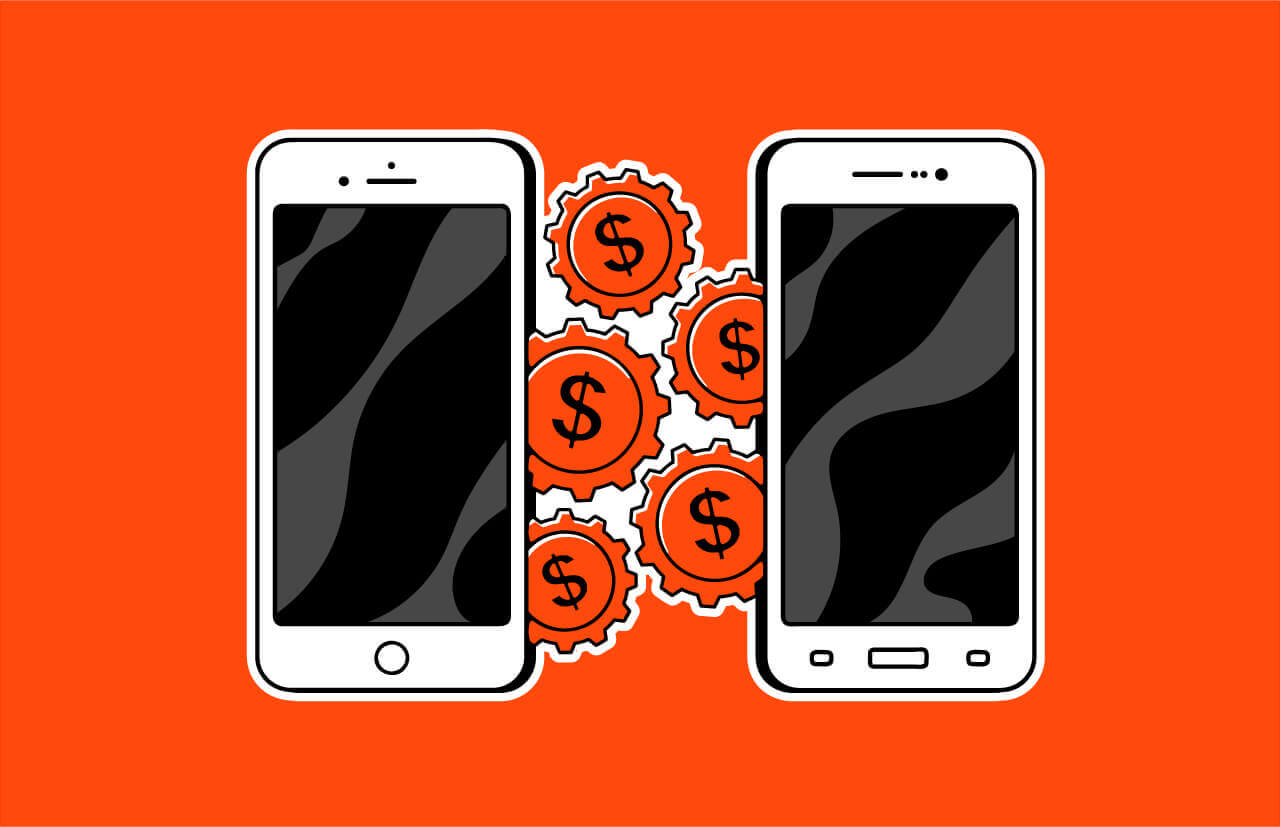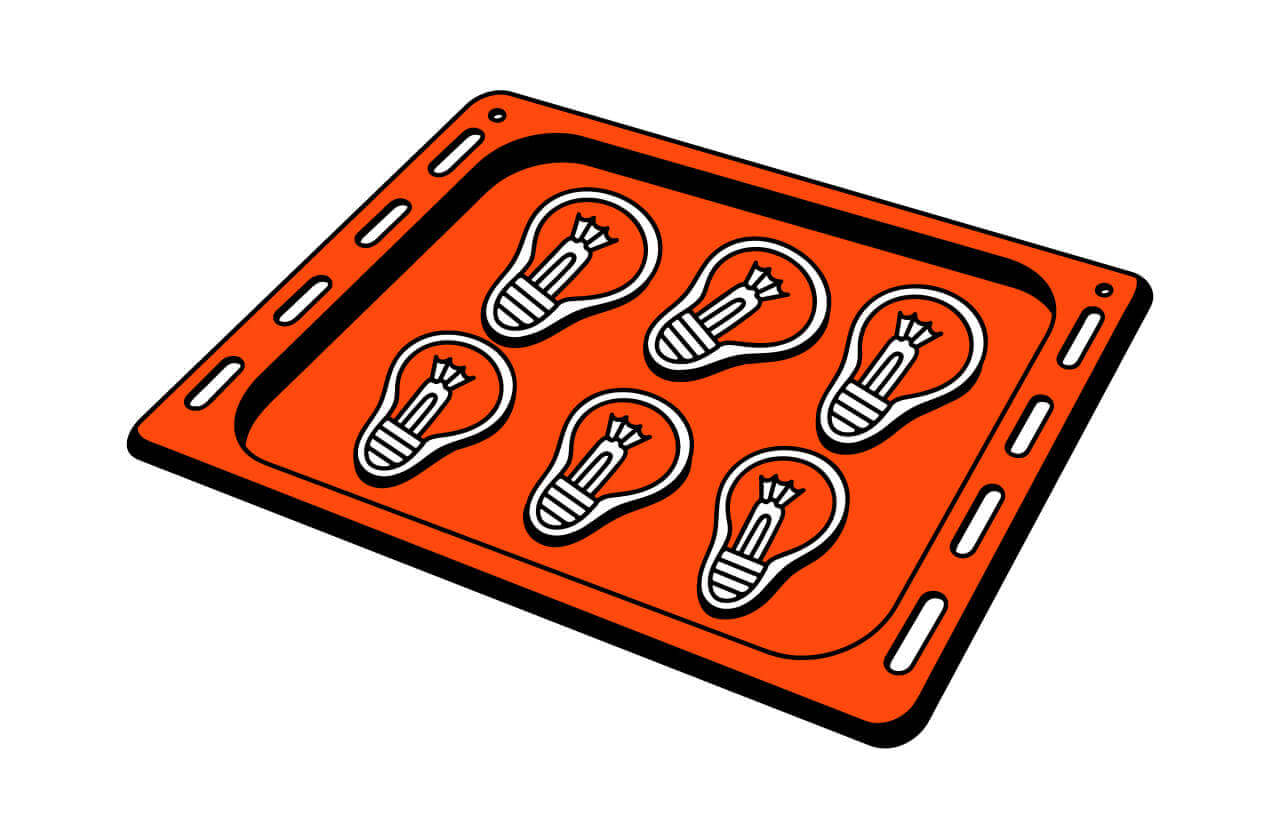UX research is a way of figuring out how users really interact with a product.
Its defining feature is that it brings the end-user into the research process. This pretty much prevents the designers from constantly creating solutions for themselves.
As UX design is centered around the user, it's essential that designers are always thinking about how people will use their product and how it'll fit into their lives. We've already looked at the easy (and free!) way to run design tests (check it out here).
So today, we're taking a deeper dive into the process of UX testing itself.
What is a user research interview?
In simple terms, UX research is held up by two main pillars — data collection and data analysis. At the very start of a project, UX research is focused on collecting all the data we can get our hands on.
As the project develops, research becomes more focused on practical applications. This leads to A/B testing, user interviews, and hypothesis testing to improve the design.
This means we can identify two main forms of UX research: qualitative and quantitative.
- Qualitative research, also known as 'soft,' helps gain insight into user motivation and preferences, answering questions like 'why aren't users engaging with the content?' or 'what impression does the landing page make?'.
- Quantitative research deals with all data expressed in numeric values and can answer questions like 'how many users have clicked this button?' or 'what percentage of active followers engaged with the CTA?'. This data then feeds iбnto statistical models and helps better understand and predict user behavior.

critical web design mistakes to avoid
Qualitative research is better suited for identifying usability problems and finding solutions, while quantitative can obtain stats and data.
Using Spotify as an example, let's look at some user design issues that could be solved with UX research.
Spotify was developed for its target audience — music-loving mobile users. So by interviewing people in this demographic, we can grasp how understandable the product is and if it's achieving its goal. To get the most useful answer, we need to ask open-ended questions to provide insights for product improvement.
"If I had an hour to solve a problem, I'd spend 55 minutes thinking about the problem and five minutes thinking about solutions." — Albert Einstein.
Our goal isn't to study the attitude towards the product but the behavior of its users. So the best way to approach it is to give the target audience a real product (in our case Spotify) and ask them to create a playlist. This is called Usability Testing.
Ground rules
- Don't interview friends and colleagues.
- Always conduct one-on-one interviews with the interviewee and not in groups.
- On average, it's enough to interview 5 users to collect data. Research shows that above that, responses just get repetitive, and you're losing time.
- In the case of usability testing, study quantitative analytics before starting qualitative research. Understanding how many people get off track and at which step will give you an understanding of what questions you should be asking.
- Use open-ended questions.
- If resources are available, try to test the prototypes as well as the current interface.
- Don't try to sell your solution to a user.
- Keep it under an hour. It keeps you focused and helps avoid vague answers from tired participants.
- Record audio or video, take notes, use activity tracking software (for example, Hotjar).
Here's a quick example of closed-ended questions generating limited insights:
— Do you like using the app?
— Yes
— Do you listen to music frequently?
— No
Here's how open-ended questions can boost the quality of responses:
— Tell us about your experience using the application
— I like using the app because I like listening to music
— Where do you usually listen to music?
— In the car on the way to work
— Tell us more about how you discover new music
— I recently checked out the New Releases section on Spotify
Next, we test the hypothesis. Once you've determined the purpose of the interview, ask open-ended questions and keep clarifying as you go:
— What kind of music do you listen to?
— Mostly hip hop
— Can you name your favorite artist?
— I'd say, Eminem
— Can you play a song?
— Yes *opens the search*
— Have you heard the last song, "Just lose it"?
— Pfft the last one? It's like 20 years old!
— Can you play it?
From here on, it's essential to observe the user, their behavior, and the sequence of actions. They will either ignore the feature you're trying to test or use it in their own intuitive way. This is where you can get the best UX insights.
Like many qualitative methods, in-depth interviews can be tricky to process for final results. You can determine how exactly you want to interpret them based on the initial goals.
To make it easier to process results, you need to combine and structure the data for all participants to highlight the key points. But that's an entirely different story, and one we'll save for next time.
What are your thoughts on this article? Let us know.
Also, subscribe to hear about legendary business pivots on our CTRL SHIFT podcast.





